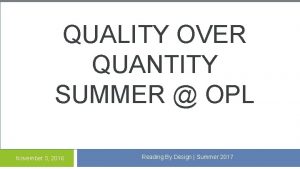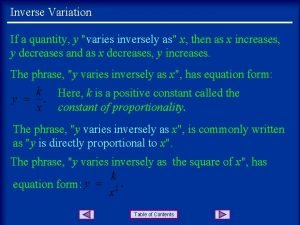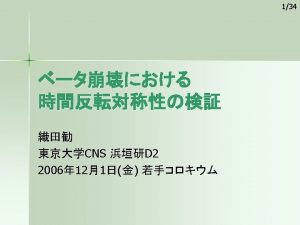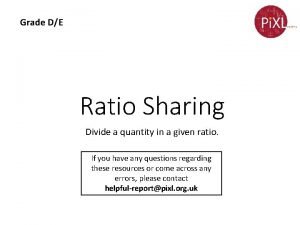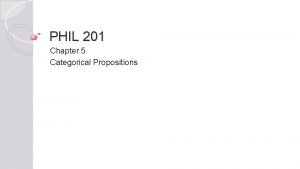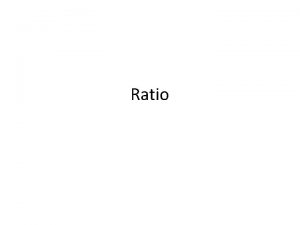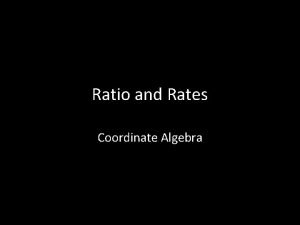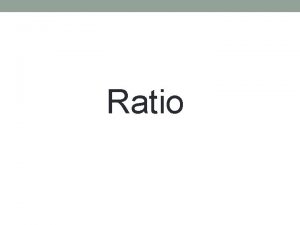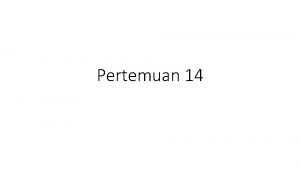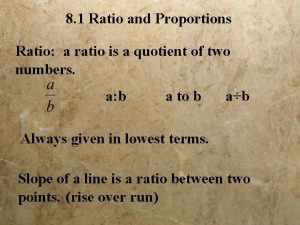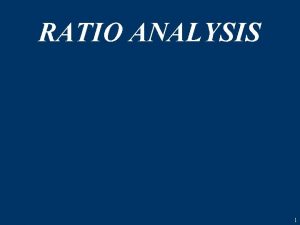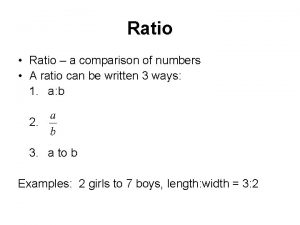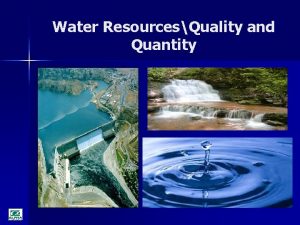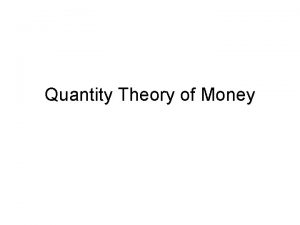Quality over quantity Does a higher staff ratio
















- Slides: 16

Quality over quantity Does a higher staff ratio affect the quality of provision?

The aim § Explore the impact changing staff ratios has on your setting Is it possible to provide good quality provision with a 1: 13 ratio?

1. Every child deserves the best possible start in life and the support that enables them to fulfil their potential. Children develop quickly in the early years and a child’s experiences between birth and age five have a major impact on their future life chances. A secure, safe and happy childhood is important in its own right. Good parenting and high quality early learning together provide the foundation children need to make the most of their abilities and talents as they grow up. Introduction to the EYFS 2017

What does quality look like ? In pairs discuss: ‘What makes good quality EYFS provision? ’ Agree one key point to feedback to the group 5 minutes


Staff qualifications, training, support and skills The daily experience of children in early years settings and the overall quality of provision depends on all practitioners having appropriate qualifications, training, skills and knowledge and a clear understanding of their roles and responsibilities… Providers must support staff to undertake appropriate training and professional development opportunities to ensure they offer quality learning and development experiences for children that continually improves. EYFS 2017 para 3. 20

Staff: child ratios For children aged three and over in registered early years provision where a person with Qualified Teacher Status, Early Years Professional Status, Early Years Teacher Status or another suitable level 6 qualification is working directly with the children: • There must be at least one member of staff for every 13 children • At least one other member of staff must hold a full and relevant level 3 qualification EYFS 2017 para 3. 33

The Effective Provision of Pre-School Education(EPPE) Project Main findings: • Full time attendance led to no better gains for children than part-time provision • Good quality can be found across all types of settings. However, quality was higher overall in integrated settings, nursery schools and nursery classes • Settings which have staff with higher qualifications, especially with good proportion of trained teachers on the staff, show higher quality and their children make more progress

What do children need? 1. 8. Each area of learning and development must be implemented through planned, purposeful play and through a mix of adult-led and child-initiated activity. Play is essential for children’s development, building their confidence as they learn to explore, to think about problems, and relate to others. Children learn by leading their own play, and by taking part in play which is guided by adults. There is an ongoing judgement to be made by practitioners about the balance between activities led by children, and activities led or guided by adults. Practitioners must respond to each child’s emerging needs and interests, guiding their development through warm, positive interaction. As children grow older, and as their development allows, it is expected that the balance will gradually shift towards more activities led by adults, to help children prepare for more formal learning, ready for Year 1. EYFS requirements 2017

Very Structured Adult directed, little play support Unstructured play Play without adult

A balanced curriculum Child initiated learning in an enabling environment created by adults who scaffold children's learning through sensitive interactions while knowing when to stand back Adult led Planning purposeful adult guided playful experiential learning activities

Teaching is a balancing act

Ofsted definition of teaching Teaching should not be taken to imply a ‘top down’ or formal way of working It is a broad term that covers the many different ways in which adults help young children learn. It includes their interactions with children during planned and child-initiated play and activities: communicating and modelling language, showing, explaining, demonstrating, exploring ideas, encouraging, questioning, recalling, providing a narrative for what they are doing, facilitating and setting challenges.

Ofsted definition of teaching It takes account of the equipment adults provide and the attention given to the physical environment, as well as the structure and routines of the day that establish expectations. Integral to teaching is how practitioners assess what children know, understand can do, as well as taking account of their interests and dispositions to learn (characteristics of effective learning), and how practitioners use this information to plan children’s next steps in learning and monitor their progress. Ofsted. Early years inspection handbook (2015) p 35

Resources to help support the development of effective teaching

Quality verses quantity Quality = a quality outcome for children Quantity = a less obvious outcome for children It is not what you have it is the way that you use it!
 Quality over quantity
Quality over quantity Is mass a scalar quantity
Is mass a scalar quantity Vector and scalar quantities
Vector and scalar quantities Scalar quantity
Scalar quantity Vary inversly
Vary inversly Polar and axial vector pdf
Polar and axial vector pdf Divide a quantity in a given ratio
Divide a quantity in a given ratio B. quality vs quantity
B. quality vs quantity Difference between quality and quantity
Difference between quality and quantity Quality quantity
Quality quantity Components of categorical proposition
Components of categorical proposition Right time right place right quantity right quality
Right time right place right quantity right quality Ratio questions gcse
Ratio questions gcse European quality assurance standards
European quality assurance standards Over the mountains over the plains
Over the mountains over the plains Siach reciting the word over and over
Siach reciting the word over and over Explain how to handing over and taking over the watch
Explain how to handing over and taking over the watch
